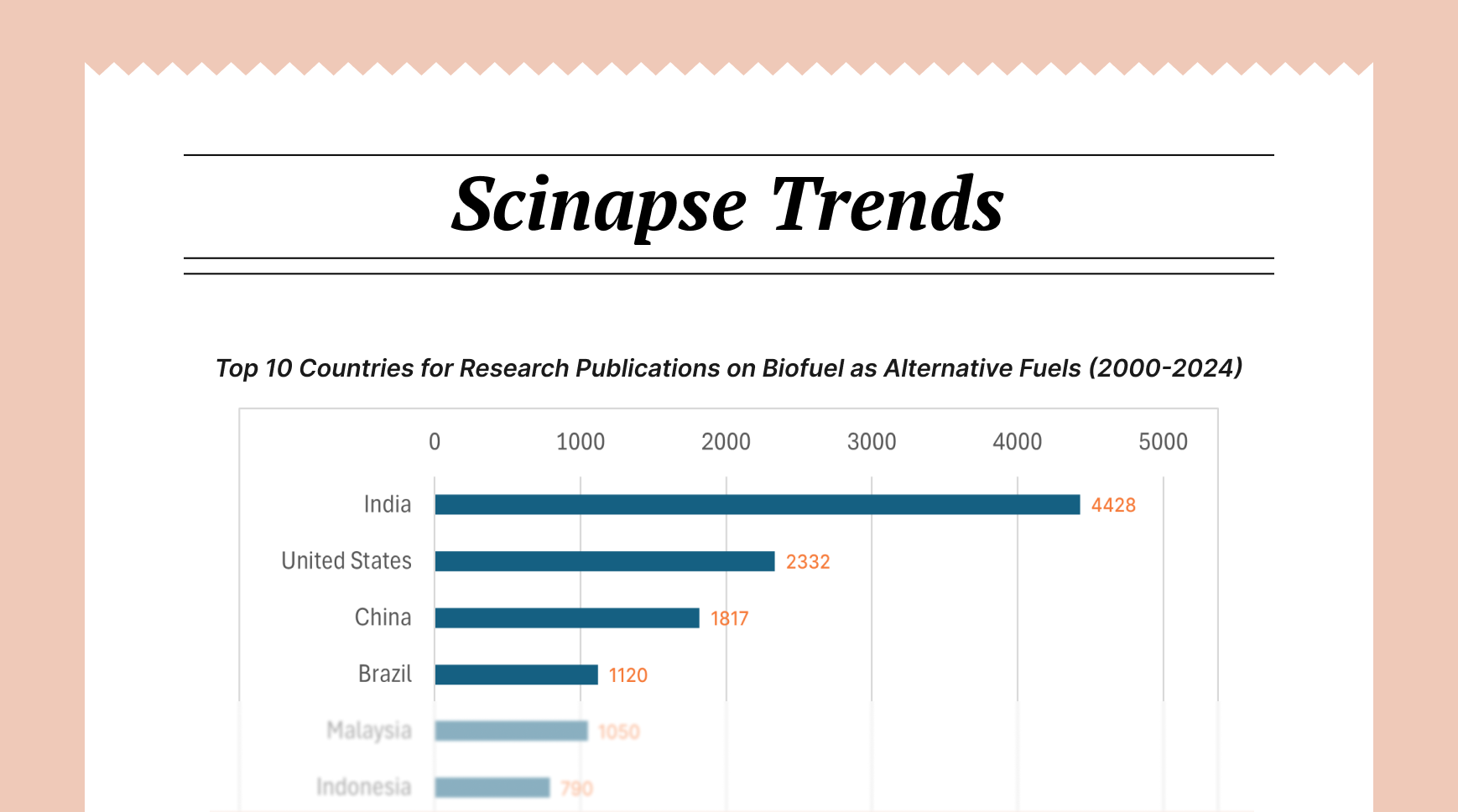Best Way of Conducting Literature Reviews

The literature review is a comprehensive and critical analysis of existing scholarly work relevant to a researcher's topic. A well-executed literature review not only demonstrates familiarity with the current state of knowledge but also identifies gaps, inconsistencies, and potential avenues for future research. However, the volume of academic publications can make this process overwhelming.
Utilizing AI for Literature Review
Scinapse is an AI-driven academic search engine specifically designed to aid researchers in discovering relevant research, understanding field insights, and tracking evolving research trends. With access to an extensive database encompassing approximately 250 million papers, including a meticulously curated collection of 100 million quality-controlled publications, Scinapse directly addresses the challenges posed by the overwhelming volume and complexity of academic literature. Its coverage spans over 99% of journals indexed in the Science Citation Index Expanded (SCIE), and it seamlessly integrates data from multiple prominent public databases such as MAG, PubMed, OpenAlex, and Crossref, further enriched by web-crawled data.

Utilizing Scinapse for Literature Review offers several key advantages:
- Customized AI Review Creation: By simply inputting a few relevant keywords, researchers can leverage Scinapse to generate a personalized mini literature review tailored precisely to their specific research focus. This eliminates the need to manually sift through countless potentially irrelevant papers, providing a concise and targeted overview of the most pertinent insights from the past five years. This feature allows for a rapid understanding of the current research landscape without the initial time investment of traditional searching.
- Up-to-date Research Trends: Scinapse prioritizes the identification of current advancements by focusing on original research papers rather than review articles. This ensures that researchers stay abreast of the very latest findings and emerging discussions within their field, crucial for identifying novel research directions and understanding the cutting edge.
- Efficient Grant Preparation: When preparing research proposals, demonstrating a thorough understanding of current research trends and identifying existing gaps in the literature is paramount. Scinapse facilitates this process by enabling researchers to quickly gather relevant insights, strengthening their proposals with evidence of their awareness of the contemporary research landscape.
- Time Savings: The sheer volume of academic literature can be daunting. Scinapse helps researchers bypass information overload by filtering and synthesizing information, allowing them to focus their efforts on the most relevant and impactful findings, significantly reducing the time spent on initial exploration.
When considering the adoption of an AI-powered tool like Scinapse for literature search, it is essential to evaluate its capabilities based on several crucial parameters:
- Research trends analysis capabilities: The tool should be able to identify and visualize emerging trends, shifts in research focus, and influential publications over time.
- Ability to filter papers by keywords: Precise keyword filtering is essential for narrowing down search results and focusing on highly relevant literature.
- Publication year range selection: The ability to specify a time frame for the search is crucial for understanding the historical development of a topic or focusing on recent advancements.
- Institutional affiliations filtering: Identifying research output from specific institutions can be valuable for understanding the contributions of leading research groups.
- Journal name filtering options: Focusing on publications within specific journals can be important for understanding the discourse within particular sub-disciplines.
- Geographic/country filters: Understanding the geographical distribution of research on a topic can reveal important contextual variations.
- Citation count information: Citation counts indicate the influence and impact of a particular publication within the research community.
- Journal impact factor data: Journal impact factor can offer insights into the prestige and influence of the publication venue.
AI-powered tools like Scinapse are particularly invaluable at the initial stages of a research project or during the preparation of grant applications. They provide a rapid and efficient means of identifying key research directions, exploring related work, and understanding the current state of the field.
Essential Strategies for Effective Literature Review
While AI-powered tools offer significant advantages in the search and initial analysis phases, a comprehensive literature review requires more than just automated processes. Critical evaluation, in-depth analysis, and thoughtful synthesis remain crucial human endeavors. Regardless of the tools employed, several fundamental strategies underpin an effective literature review:
1. Define a Clear Research Question and Scope
The foundation of an efficient literature review lies in a well-defined research question. This question acts as your guiding star, directing your search, selection, and analysis of sources. Without a clear focus, you risk becoming lost in a sea of tangential information.
Your research question should strike a balance between specificity and breadth. It should be narrow enough to provide a clear direction for your search but broad enough to yield a sufficient body of relevant literature. Take the time to refine your question, testing its effectiveness through preliminary searches. If your initial searches produce an overwhelming number of results, your question likely needs to be more focused. Conversely, if you find very little relevant literature, you may need to broaden your scope.
Once your central research question is established, define the boundaries of your review by considering:
- Time frame parameters: Decide whether to focus on recent developments, historical context, or a specific period relevant to your research. For rapidly evolving fields, limiting your search to the past 5-10 years might be appropriate, while foundational or theoretical topics may necessitate a broader historical perspective.
- Geographical scope considerations: Determine whether your review should encompass global research or focus on specific regions influenced by cultural, political, or environmental factors.
- Source type specifications: Clarify the types of publications you will include, such as peer-reviewed journals, books, conference proceedings, dissertations, or gray literature. Each source type offers unique perspectives and levels of rigor.
Articulating these parameters in a concise document will serve as a constant reference point, preventing your search from straying and ensuring a focused and manageable review.
2. Create a Structured Timeline
Effective time management is crucial for transforming a potentially overwhelming literature review into a series of manageable tasks with clear deadlines. Without a structured timeline, the process can easily become protracted and consume far more time than initially anticipated.
Develop a realistic schedule that allocates specific timeframes for each stage of the literature review process:
- Initial search and source gathering (2-3 days): Focus on identifying potential sources based on your keywords and search strategies without getting bogged down in detailed reading.
- Source evaluation and selection (1-2 days): Apply your defined relevance criteria to narrow down your initial list to the most pertinent sources.
- Reading and note-taking (5-7 days): Allocate time for in-depth reading and detailed note-taking for each selected source, adjusting based on the complexity and volume of material.
- Organization and outlining (1 day): Structure your synthesized findings into a coherent framework that will guide your writing process.
- Writing first draft (2-3 days): Focus on getting your ideas down on paper, covering all the key themes and arguments identified in your analysis.
- Revising and editing (1-2 days): Polish your draft for clarity, coherence, logical flow, and adherence to academic writing standards.
This timeline should be adapted to the specific scope of your review, your available time, and your familiarity with the topic. Incorporating buffer periods between phases can accommodate unexpected challenges or the need for deeper engagement with particularly important sources. Regularly track your progress against this timeline, adjusting as necessary to maintain momentum and prevent the review from becoming an open-ended endeavor.
3. Evaluate and Select Sources Critically
Whether you are utilizing traditional search methods or leveraging the power of AI, the critical evaluation of each potential source is paramount. Not all publications are created equal, and it is your responsibility as a researcher to discern credible and relevant work from less rigorous or tangential material. Consider the following factors when evaluating sources:
- Relevance to your research question: Does the source directly address your research question or a closely related aspect?
- Credibility and authority of the author and publication: What are the author's credentials and affiliations? Is the publication peer-reviewed and reputable within the field?
- Methodology and sample size: If the source presents empirical research, is the methodology sound? Is the sample size adequate and representative?
- Publication date and currency of information: Is the information current and relevant to your research context? This is particularly important in rapidly evolving fields.
- Citation frequency: How often has the source been cited by other researchers? High citation counts can indicate significant influence and impact.
4. Analyze and Organize Your Sources Systematically
As you delve into each selected source, engage in active reading and critical analysis. Consider the following aspects:
- Key findings and arguments: What are the main conclusions or claims presented by the author(s)?
- Methodological approaches: How was the research conducted? What methods were employed?
- Strengths and limitations: What are the strong points of the research? What are its limitations or potential biases?
- Relationship to other literature: How does this source connect with other works you have reviewed? Does it support, contradict, or build upon existing findings?
- Connections to your research question: How does this source inform your research question and potential contributions?
Maintain detailed notes on each source, including complete bibliographic information and your critical analysis. Systematically organize these notes, perhaps using a spreadsheet or a dedicated reference management software. This will facilitate the synthesis of your findings and the construction of a coherent narrative in your literature review.
Author: Uttkarsha B
- AI-Ethicist and STM Research & Publishing Expert
Never re-search again.
Scinapse is made by researchers for researchers.
Join the next generation of research at ⏯️ https://scinapse.io/
Pluto Labs
Pluto Labs helps researchers focus on their research by improving several inefficiencies in the academic research process. We offer data-driven insights from academic papers, allowing users to easily obtain review-level results for their desired range of papers.
https://pluto.im/





Comments ()